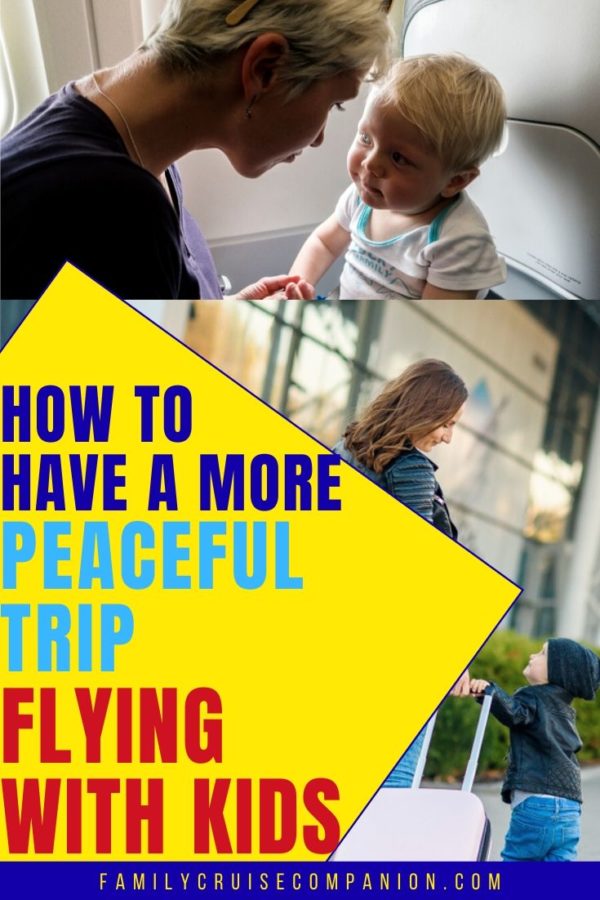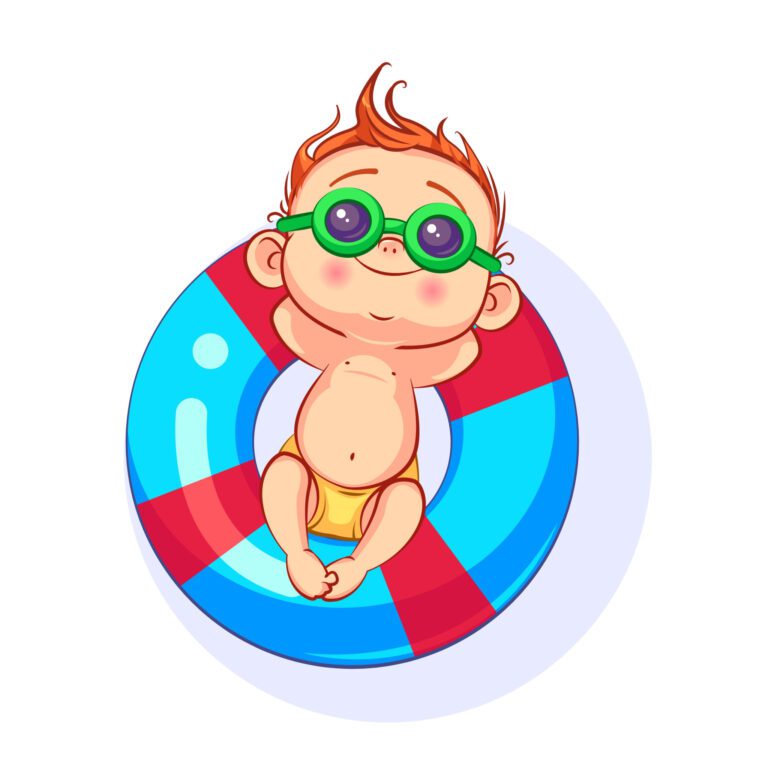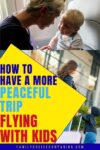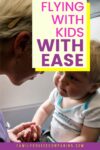Flying with young children will seldom be a stress-free adventure. But these time tested tips and strategies will help make flying with kids more manageable and peaceful.
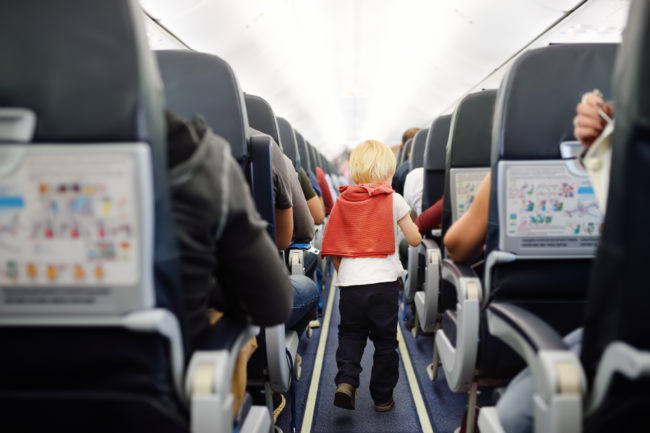
When I first started flying with kids, it was a dive into the deep end of the pool. Flying with a then 3-month old baby. And the return trip was going to be me flying solo with said baby. While there were a few small bumps along the road, things turned out reasonably okay.
During those dozens of flights during my oldest child’s infant and toddler years, he would literally receive RAVE reviews from flight attendants, crew members and random strangers as to how well he behaved on the plane.
Things didn’t work out quite so well with his little brother. That’s when I learned that small kids can have widely and wildly different travel personalities. (Just like your fellow travelers and flight personnel.)
Primary lesson learned? There’s so many aspects of flying with kids that fall well outside your control, but there are many that do. And keeping your focus on those latter ones can help make your trip much less stressful.
Regardless of where your child falls on the travel personality spectrum, these basic tips will help you have a more organized and peaceful trip.
Related Content: Here Are The 37 Clever Travel Hacks That Make Family Trips Easier
Preparing for Your Flight
By now, every adult knows that they shouldn’t head to the airport without some type of valid picture I.D. But what about kids? Do you need I.D. for a child to fly?
The answer primarily depends on whether you are flying international or domestic.
When Is Documentation Required?
If you are flying with kids domestically (USA), you only need identification for yourself. You don’t need identification for your child. You don’t even need proof that your child belongs to you.
But, if you do happen to be flying with kids who do not belong to you and the parent isn’t with you, then it’s a good idea to have something just in case. Some proof that you’re authorized to take the child with you. In the case of a foster child situation or where you have a pending adoption, you will need to have some type of documentation from the relevant social service agency, adoption agency or court order.
If you’re flying with kids in less formal situations, take some type of written authorization from the child’s parents. So, for instance, if you’re going on a cruise, there’s a special consent form that you have to submit to the cruise line for minor passengers who aren’t your kids. Alternatively, you can find many templates for sample travel consent forms on the internet.

If you are flying with kids internationally, your child will need his or her own passport. And, in certain circumstances, you may also need a notarized travel consent form or other documentation.
Related Content: How To Conquer Family Cruises Without Passports
When Is Documentation Recommended?
If you are trying to fly your kid as a lap child or on an age-based discounted ticket, bring proof of your child’s age. Either a birth certificate or passport should suffice. Also, be aware that if you have a birthday mid-trip, you may not be able to travel as lap child on the return leg.
Also, if circumstances make it possible that someone will challenge your right to travel with a particular child, it’s a good idea to have a copy of your child’s birth certificate. This may seem annoying and/or outrageous. But, remember that your primary goal at this point is to get from point A to point B with minimal drama.
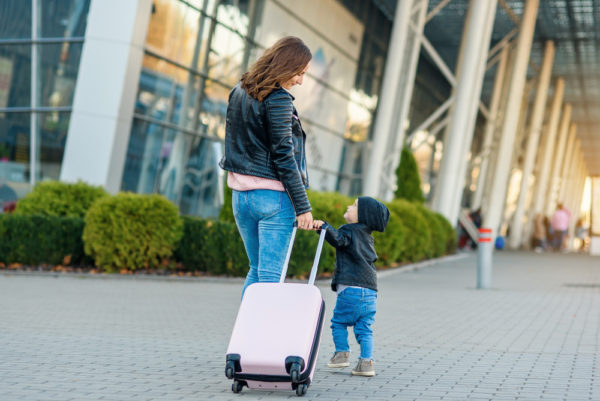
Choosing The Right Flight When Flying With Kids
There are varying points of view as to when is the best time of day to fly when flying with kids. For small children, if your child has predictable nap schedule, then try to fly when they would otherwise be sleeping for most of the flight. But caveat, don’t rely on any expectations that your child will actually sleep.
For domestic flights of average duration, opt for the non-stop flight. For long haul flights, a layover may be marginally beneficial.
But, beware of overly tight connections. Assume that the distance you will need to travel will be the longest one possible. While longer layover may seem like a complete waste of time, it may do wonders for minimizing stress levels.
Choose a time when the airport will not be at its most busy – to the extent practical. It will make it easy to navigate. And it’s easier to get some assistance when needed when everyone around you is not completely frazzled.
This post may contain affiliate links that could result in payment of a commission to this website (at no additional cost to you). Visit our Disclosures Page for more information.
Flying With Kids: Navigating The Airport Smoothly
Airport Logistics
Ideally, you want to be able to move through the airport smoothly and in a timely fashion.
If you know you will likely be hustling, don’t expect your small child to pull his or her own carry-on. Even if they really want to. It can easily become a burden or a source of unnecessary conflict.
And, you should assume that you may have to walk the farthest distance possible at every turn. Is your child old enough to make it without needing to be carried or crying the whole way? If no, then account for that. Bring a lightweight travel stroller that you can use at the airport, or go the strap on baby carrier route (if child small enough).
Checking Luggage
Checked bags are your friend when travelling with smaller children. You want to have as few things to keep up with as possible. Check out our post on packing hacks to make the most of your checked luggage.
If you do decide to check bags and you’re flying with a baby or toddler, be sure one of the bags you check is some kind of stroller bag or car seat bag.
Usually you’re allowed to check strollers and car seats for free. Get a roomy stroller bag and take full advantage of the extra room. We always adopted the view that if it’s baby/toddler related, then it’s fair game to toss in too. So no need to pay extra for some of those baby items that can otherwise take up space in your main luggage, or add more weight. Great candidates to include in the checked stroller bag: baby formula and accessories, extra diapers and related supplies.

Going Through Security
Explain to your the child the importance of moving smoothly through security and remind him once you are actually at the line. This isn’t the time for play or antics. Nor is the time for poorly worded jokes.
Generally, passengers may only take liquids through security that are less than 3.4 ounces (or 100 ml). However, TSA has modified rules for baby items such as baby food, formula, breast milk and juice. You are not subject to the specific size limitations, but you may only bring through “reasonable quantities” of such items.
The TSA officers on duty (or the supervisors) determine what’s reasonable. I have actually been challenged on this one before. And the TSA folks that the amount of liquid formula I had in my carry on bag exceeded what was required for the expected duration of my flight. I was given the option to go back and check it or dump it. (As I recall, I had 6 bottles for a flight that was scheduled to be about 4 hours. I can see why this might be viewed as excessive, but at the time, I was concerned about delays.)
As for actual baby gear like strollers and car seats, those must be placed through the x-ray machine. Items that won’t fit will be hand screened.
If you’re wearing your baby in a sling, you may be allowed to walk through as is, but you may be subject to additional screening.
TSA also has modified screening rules for older kids who are less than 13 years old. They aren’t required to remove their shoes, light jackets or headwear.
Key Tasks After Security
Once you have passed through security, you should try to have everyone go to the bathroom. This will cut down on the need to access the tiny facilities on board. Or at least delay it.
You should purchase any food/beverage items that you were not allowed to carry through security. If you think you will want milk for any reason, you definitely should buy some before getting on the plane. They won’t have individual milk cartons on board. This is also the time to load up on any additional snacks.
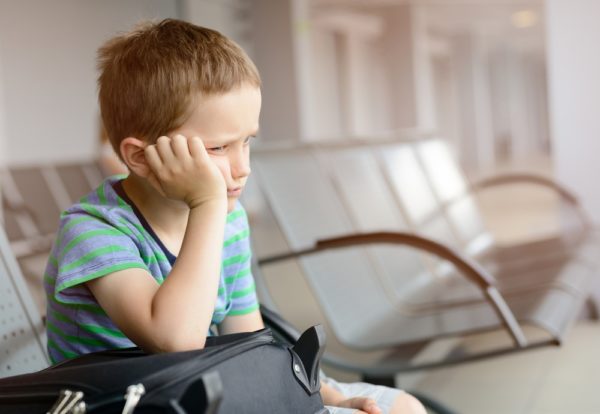
Airport Lounges
If you plan to spend a long time at the airport and have access to a lounge, use it. Generally speaking, the experience is much more peaceful and comfortable than waiting at the gate or food court. The bathrooms are nicer, and the seating is more comfortable and spacious. And, you will usually have convenient access to many amenities such as free wifi, refreshments, entertainment, and an abundance of charging outlets. Many lounges also have special rooms or tucked away areas for families.
For really extended layovers, consider buying a day pass even if you don’t have regular access.
At the Gate
If you do bring a lightweight travel stroller to use in the airport, you can gate-check it. But, be sure to bring a gate-check bag for the stroller. The same is true for any car seats or infant carriers that you elect to gate-check: Bag it!
Gate checked luggage often gets left out on the tarmac, exposed to the weather and other elements. You want to avoid arriving at your destination with a sopping wet car seat that was left on the tarmac in the rain. It doesn’t matter if you take a deluxe bag fit for a prince or a budget model that may not last as long, take something.
On the Plane
Seating
Infants/Toddlers
If you are flying with a child under the age of two, you have the option to purchase a sit or hold her in your lap for the duration of the flight (and save some money). If your budget can afford it, this is always the preferred option. Particularly if you are flying solo with child. Much benefits of having the extra space and being able to give yourself a break. This is especially true if you are hoping for some napping (yours or your child).

There are other advantages that come with springing for an additional full seat. You get an additional set of baggage allowances, and you can also bring on more carry ons. You also have additional space to store stuff under the seats in front of you. Which will be all kinds of roomy when you have a little one whose feet come nowhere near touching the floor.
Car Seats & Alternatives
If buying a seat for your baby or toddler, you will need to plan to bring an FAA-approved car seat. Do not assume that your regular carseat is FAA approved. The ones that are will specifically say that on the outside of the actual seat.
My favorite travel car seat of all time is the Sit-n-Stroll. Sadly, for some reason, it seems that it’s more challenging to get these days than when my kids were babies. It’s currently listed as out of stock until April 2020 on every site I checked.
Another popular alternative to the Sit-n-Stroll which makes your existing car seat more mobile is the Britax Car Seat Travel Cart.
If your child is old enough to sit up on his own, the FAA approved CARES harness is also a great option that we have used. As a plus, it’s really easy to tuck into the side of a duffle bag or carry-on tote.
Specific Seats
If you have the option to book seats in advance, take it. Particularly if you are flying with kids. Avoid the drama of trying to get other passengers to switch seats. You can’t count on people’s willingness to do so.
I once faced a grim guy who refused to switch seats so our party could sit together, even though I was offering him an objectively better seat closer to the front. He started saying “No!” repeatedly and shaking his head before I could even finish getting my words out. It was only the disapproving comments from other nearby passengers, and the realization that he was going to be stuck in the row with the toddler if he didn’t switch seats, that finally changed his mind.
Also, check out the seat map to make sure the seats fit your needs. Check whether they’re the right configuration. And whether there’s easy access to bathrooms. And double-check them on flight day. (The seating issue above arose when the airline switched planes and reassigned our travel party to seats that weren’t together.)
If you’re flying with a toddler, you may find that bulkhead seats are pure nirvana. That little extra space can be just enough for child to “walk” around or get enough movement that they don’t feel confined to the seat.
That said, if you’re beyond the toddler years, consider buying seats toward the back of the plane. While an adult traveling alone may want to avoid those seats because they are so close to the bathroom, that same fact makes them a good choice when traveling with younger kids who may need to make it to key spot quickly. And, you’ll most likely have the added bonus of being closer to the flight attendants if you need assistance. And also closer to the snacks if you need to grab something outside the regular service.
What To Wear
Parents should wear comfortable clothes with extra pockets and shoes that can slip on and off easily.
When flying with younger kids, consider putting your toddler or preschooler in a pull up even if you think they are fully potty trained. For two reasons. Accidents happen, and it’s easier to discard a pull up at your destination airport than trying to do a full wardrobe change in the airplane bathroom.
Also, you can’t always predict whether an urgent bathroom need will arise when you will not be allowed to take child to the bathroom. Many flight attendants will make an exception for small children. Some, however, do not.
Your Carry On Items
The Luggage
A large backpack can be an excellent choice for your carry on. Even if you would never wear one in everyday life. It allows for moving through the airport hands free. Or, alternatively, if you have opted to bring more pieces on board, it makes it easier to manage them.
Beware of relying on a standard roll aboard suitcase. It isn’t an ideal luggage choice for items that require easy access mid flight. You will have to store it in the overhead bin, and it can be a real struggle to get down. And there’s not much room at your seat to really try and open it up to fetch things.
Essential Items to Carry On When Flying With Kids
So what are the key things you should pack in your carry on bag(s) when flying with small kids?
- Extra clothing
- Extra diapers and related supplies
- Blanket
- Snacks
- Child entertainment
Extra Clothing
When flying with a baby or toddler, always pack an extra set of clothes. You should assume that the chances of a blowout diaper are quite high, even if you rarely or never get them. And, there’s many other things can happen during your travels that require a complete wardrobe change. Either mid flight or at the airport on arrival.
Also consider packing a change of clothes (or partial set) for kids who have aged out of the toddler stage. Even kids who are fully potty-trained can have accidents. Particularly if they fall asleep in an unfamiliar place or position.
Extra Diaper Supplies
If flying with kids in diapers, pack more diaper supplies than you think you will reasonably need. Your time on the plane could unexpectedly be extended for any number of reasons, and you don’t want to be caught short. Once you’re on the plane, you won’t be able to get more. Unless chance places another passenger on board with extras they don’t need.
Blanket
A child’s blanket. Even if you’re on a flight on which you would otherwise receive a blanket, pack one in your carry-on for your small child. Blankets that you may find or receive on board are often quite thin and of dubious lineage. While a nice, soft blanket from home can be comforting and clean.
Snacks
Snacks. Always pack a snack. In fact, pack extra snacks. Pack snacks even if you’re expecting to be served food on board. There are any number of reasons why you could not be offered food on a timeline that fits your needs. Beverage and food service may get delayed due to turbulence. They may run out of stuff And you’ll want to have something to appease hungry tummies.
Child Entertainment
Entertaining activities to occupy time. And have several options. (See below.)
Travel Activities For Kids
You should pack items that you feel confident will entertain your child for several hours. And remember to factor in waiting time not spent on the actual plane. Ultimately, these are the items that worked best for us:
- Age appropriate tablets
- Interactive Books
- Small art supplies
- Small toys
Fully Loaded Tablet
A tablet fully loaded with age appropriate games, movies, shows or other media. This is not the time to get hung up on screen time issues. Count yourself lucky if your child can be entertained by a screen on a plane. It will give you a much needed break. (But bring your own headphones when flying with kids. Airplanes usually have ear buds to pass out, but those often don’t work well for small kids.)
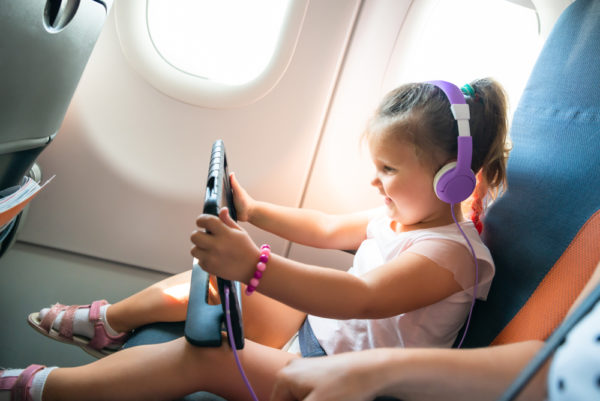
For years, we use to travel with a portable DVD player and a carry case filled with our favorite disks. No longer. A media loaded tablet trumps a portable DVD player any day. Significantly lighter, easier at security – have capacity to bring lots of movies, shows music – as well as books. Plus, these days you can easily pick up small tablets for cheaper than the portable DVD player. Even if you don’t usually have a tablet for kids at home, springing for a “travel tablet” may be worth it.
Interactive books
We always had best success with books that involved some type of interaction – flaps, tabs, etc. – but nothing noisy. These are some timeless winners:
For young kids, sticker books have always been a big hit. I would buy new ones from the Dover Little Activity Books series cheaply before every trip.
Travel friendly art supplies
Art supplies provide another great choice that appeals to a wide range of kids. The key factors to keep in mind for a plane setting are that you want something simple and clean. You don’t want to have to worry about dozens of small crayons scampering away from you under seats or through the aisle. Nor do you want to leave behind stains or marks that can’t be easily wiped away.
You can create your own travel art kid with a zip top bag, a handful of colors, pencils or washable markers and some blank paper. If you have it, toss in a large binder clip to help secure paper to seat back tray. Alternatively, you can purchase a suitable set online. You can explore options that involve dry erase sets or a variety of small sets with pre-printed coloring pages. Or, if you want something more handsy but doesn’t involve play dough (which can get messy on the plane), try a set with wikki stix.
- Crayola Washable Dry-Erase Travel Pack
- Tiger Tribes Colouring Sets
- Crayola Creative Escapes Aged Up Coloring Folio
- Color Wonder Baby Shark Coloring Pages
- Wikki Stix Traveler Playset
Small Toys
Small toys that can easily be discarded or replaced. For any plane toys, try really hard to bring things that can easily be tossed, lost or forgotten without drama or excess tears. Leave the precious items packed away – if bring them at all. It doesn’t matter how many times you check the seat backs and all around you, there appear to be magic black holes in almost every plane.
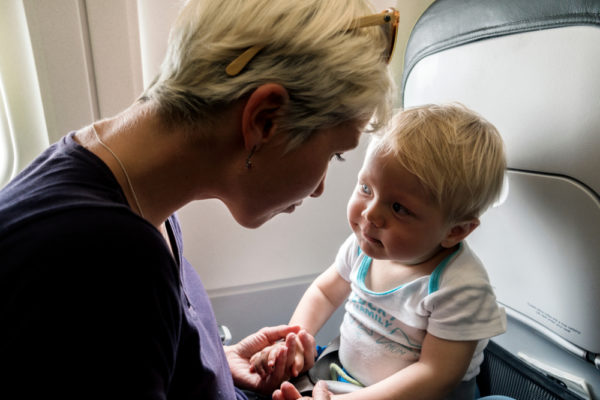
Flying With Kids in First Class or Business Class
For many reasons you may have the opportunity and/or desire to fly in a premium class. Either because your budget affords it, or because you have an abundance of frequent flier miles. There are lots of benefits to flying first class with small kids, including babies and toddlers. If you have reservations about negative reactions from other passengers, put them on the shelf. Seriously, babies/toddlers/small kids fly in first class all.the.time. I recall a holiday flight with large first class and literally half of the passengers were families flying with small kids.
Premium cabins are inherently more comfortable. Better seats with more leg room. Better viewing screens. Etc.
And, if you’re flying in a premium cabin, you have the added bonus of the priority security line and early boarding. Avoiding long security lines can help reduce some of the airport stress. And while families traveling with kids under the age of two are usually offered a preboarding option (some airlines stretch this window to age 5), early boarding privileges can be enjoyed by families with kids of any age when you have a premium ticket.
Should You Apologize For Flying With Kids?
In recent years, some families flying with kids have made a point of bringing special gifts or advanced apology notes for passengers sitting around them. Unless you generally go through life saying “excuse me for living,” there’s no reason to do this. Every category of passengers under the sun can have issues. If you’re someone who will be the topic of celebrity tabloid chatter, then perhaps consider it. But if you’re regular Jane or Joe – don’t.
Keep up with the latest tips, strategies and insights for cruises and family travel! Follow us on Pinterest:
